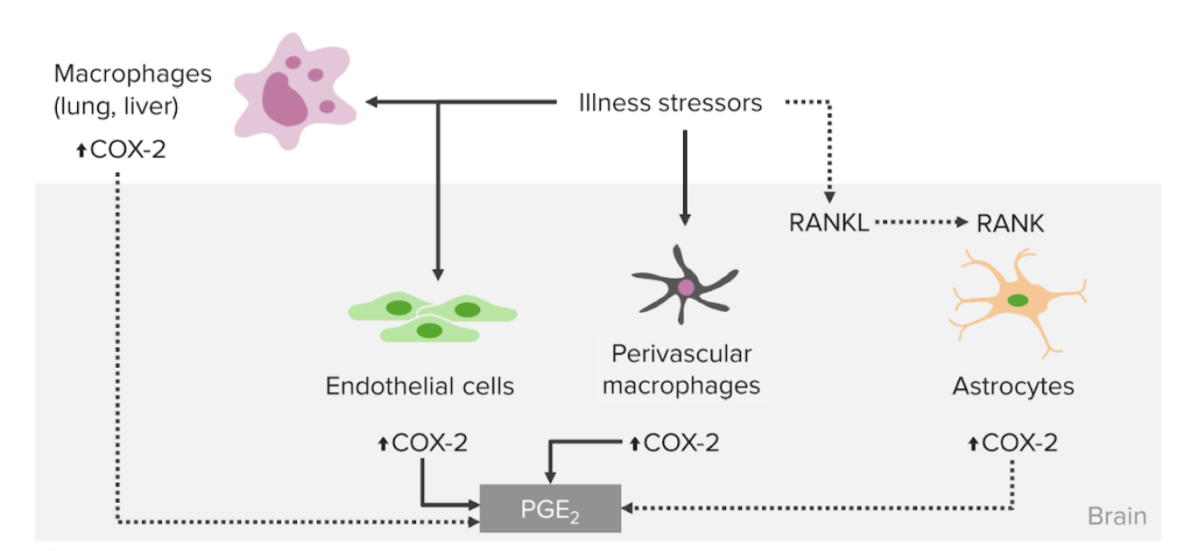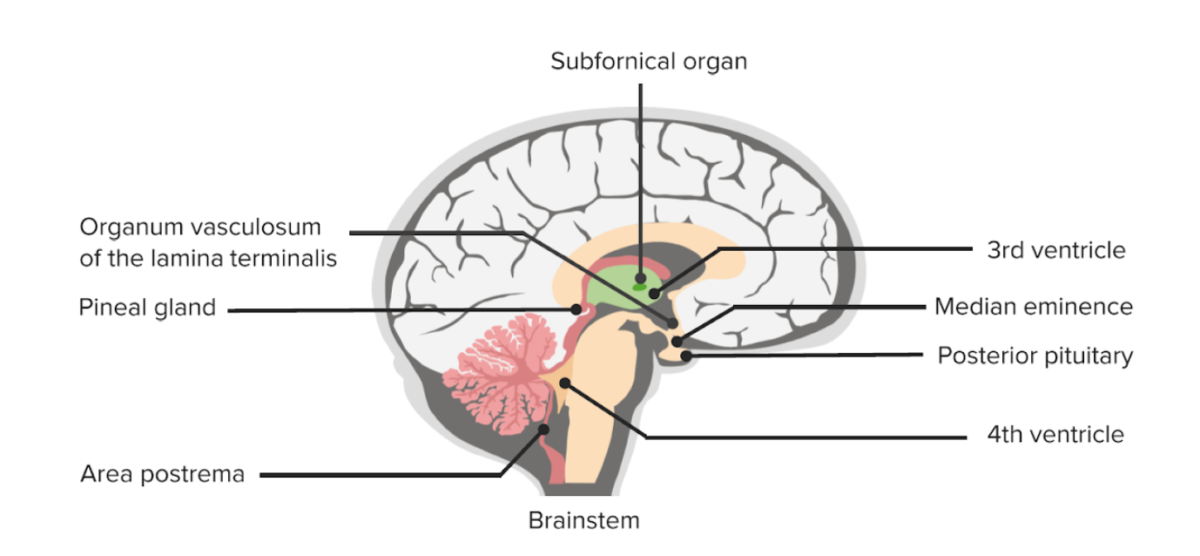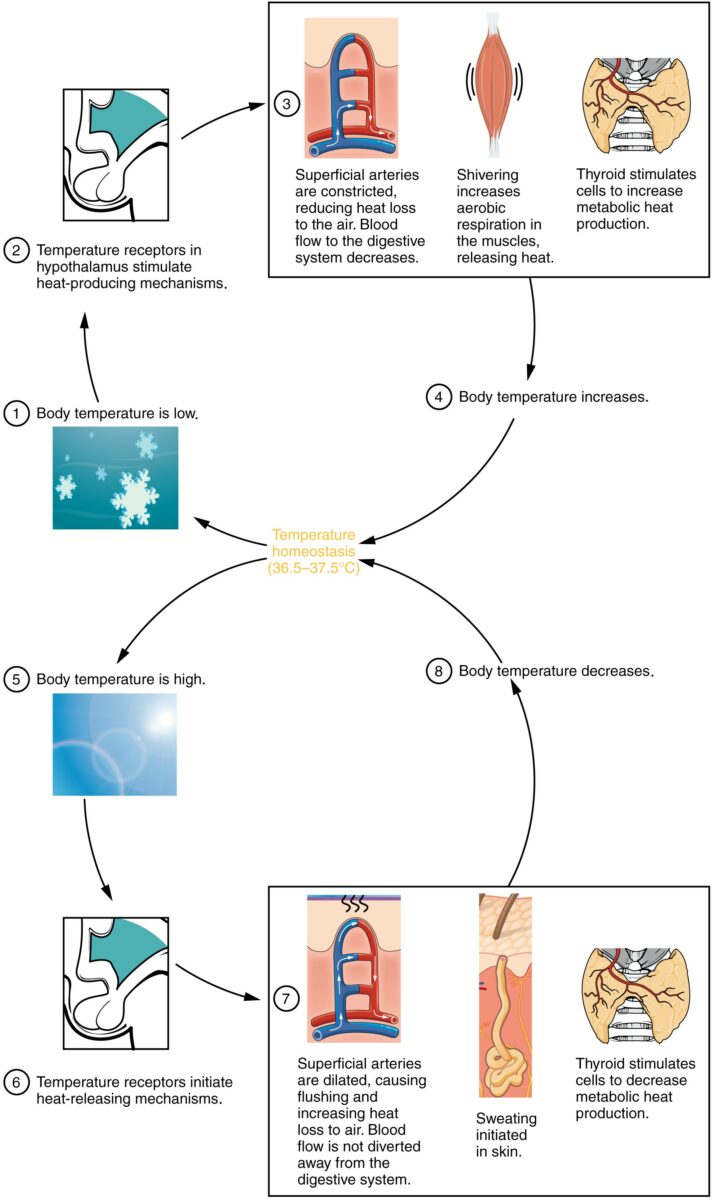Body temperature Body Temperature The measure of the level of heat of a human or animal. Heatstroke can be divided into external temperature, which involves the skin Skin The skin, also referred to as the integumentary system, is the largest organ of the body. The skin is primarily composed of the epidermis (outer layer) and dermis (deep layer). The epidermis is primarily composed of keratinocytes that undergo rapid turnover, while the dermis contains dense layers of connective tissue. Skin: Structure and Functions, and core temperature, which involves the CNS and viscera. While external temperature can be variable Variable Variables represent information about something that can change. The design of the measurement scales, or of the methods for obtaining information, will determine the data gathered and the characteristics of that data. As a result, a variable can be qualitative or quantitative, and may be further classified into subgroups. Types of Variables, the core temperature is maintained within a narrow range of 36.5–37.5ºC (97.7–99.5ºF). Although the reasons are unknown, it has been hypothesized that a narrow temperature range is maintained for the metabolic rate needed for the functioning and optimization of cellular processes. Regulation of the core temperature is one of the most critical functions of the nervous system Nervous system The nervous system is a small and complex system that consists of an intricate network of neural cells (or neurons) and even more glial cells (for support and insulation). It is divided according to its anatomical components as well as its functional characteristics. The brain and spinal cord are referred to as the central nervous system, and the branches of nerves from these structures are referred to as the peripheral nervous system. Nervous System: Anatomy, Structure, and Classification and is achieved by physiologic and behavioral feedback and feed-forward mechanisms that are mainly regulated by the hypothalamus Hypothalamus The hypothalamus is a collection of various nuclei within the diencephalon in the center of the brain. The hypothalamus plays a vital role in endocrine regulation as the primary regulator of the pituitary gland, and it is the major point of integration between the central nervous and endocrine systems. Hypothalamus. Any change in body temperature Body Temperature The measure of the level of heat of a human or animal. Heatstroke or environmental temperature triggers responses that lead to the quick and efficient resetting of homeostasis Homeostasis The processes whereby the internal environment of an organism tends to remain balanced and stable. Cell Injury and Death.
Last updated: May 17, 2024

Diagram showing the central and peripheral mechanisms through which COX-2 activity is increased, leading to increased PGE2 levels and resultant fever
COX: cyclooxygenase
PG: prostaglandin
RANK: receptor activator of nuclear factor kappa-Β
RANKL: RANK ligand

Sagittal cut of the brain highlighting the circumventricular organs (CVOs)
Image by Lecturio.Four physiologic effectors are particularly important for thermoregulation in mammals:

Diagram showing the regulatory feedback loops used by the hypothalamus to maintain temperature homeostasis
Image: “The Hypothalamus Controls Thermoregulation” by Phil Schatz. License: CC BY 4.0| Site | Strengths | Weaknesses |
|---|---|---|
| Axilla Axilla The axilla is a pyramid-shaped space located between the upper thorax and the arm. The axilla has a base, an apex, and 4 walls (anterior, medial, lateral, posterior). The base of the pyramid is made up of the axillary skin. The apex is the axillary inlet, located between the 1st rib, superior border of the scapula, and clavicle. Axilla and Brachial Plexus: Anatomy |
|
|
| Blood |
|
|
| Esophageal |
|
|
| Oral |
|
|
| Rectal |
|
|
| Tympanic membrane Tympanic membrane An oval semitransparent membrane separating the external ear canal from the tympanic cavity. It contains three layers: the skin of the external ear canal; the core of radially and circularly arranged collagen fibers; and the mucosa of the middle ear. Ear: Anatomy |
|
|
The following conditions occur when thermoregulation mechanisms are overwhelmed by environmental conditions: